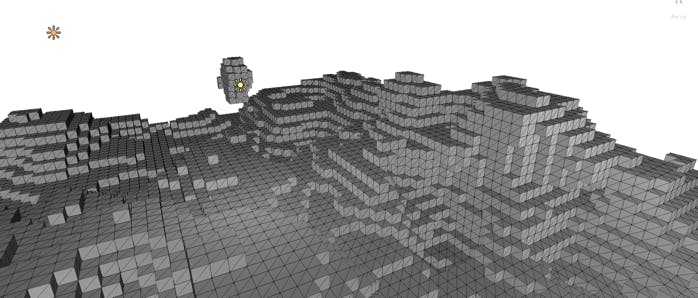
In the realm of video games, particularly in open-world games, we are often impressed by the realism of the graphics and textures. Games like God of War, GTA, Assassin's Creed, etc (there are lots of amazing open-world games out there but I'm mentioning a few of them) feature highly detailed surroundings that still maintain a sense of randomness. For instance, in a virtual forest, there may be thousands of trees, yet no two are exactly alike, then as the wind flows the grass, plants and flowers move smoothly along with it. This combination of realism and randomness is achieved through the use of the Perlin noise algorithm. The algorithm allows for the generation of large-scale graphics with a realistic, yet random, touch.
What is Perlin Noise Algorithm and How Does it Work?
Perlin Noise is a highly effective algorithm commonly utilized in the generation of procedural content. It is widely used in the gaming and film industries. The creator of this algorithm, Ken Perlin, received an Academy Award for his groundbreaking work.
Perlin noise is usually expressed as a function with two, three, or four dimensions, but can theoretically be applied to any number of dimensions. The implementation process usually includes three phases: establishing a grid of random gradient vectors, determining the dot product between the gradient vectors and their corresponding offsets, and interpolating the resulting values.
Grid Definition
In the Perlin noise algorithm, a grid of random gradient vectors is established as the first step in the implementation process. The grid is essentially a matrix of vectors that defines the direction and magnitude of the gradient at each point in the grid. These gradient vectors are used to calculate the dot product between the gradient vectors and their corresponding positions, which is an important step in generating the Perlin noise. The grid of gradient vectors is crucial to creating the random, organic-looking patterns that Perlin noise is known for. The vectors in the grid can be randomly generated, but they must be consistent throughout the algorithm to ensure a coherent pattern is produced.

Dot Product
The dot product is a key concept in the Perlin noise algorithm. It is the calculation of the scalar value resulting from the dot product of two vectors. In the context of Perlin noise, the dot product is calculated between the gradient vectors from the grid and their corresponding positions, or "offsets." The dot product represents the degree of similarity between the gradient vector and the direction of the offset, and it is used to determine the intensity of the gradient at a particular point in the grid. This information is then used in the final step of the implementation process, the interpolation, to generate the Perlin noise. The dot product serves as a fundamental building block in the Perlin noise algorithm and is used to determine the overall randomness and organic-looking patterns of the noise.
Interpolation
Interpolation in Perlin noise is the process of smoothing out the pattern generated by the algorithm. It takes the values calculated from the dot product and blends them to create a smooth, continuous noise pattern. This makes the noise look more natural, without sudden changes in intensity. Different types of interpolation, such as linear and cubic, can be used to create different styles of noise, with some methods resulting in smoother patterns and others producing more jagged patterns.

Applications of the Perlin Noise Algorithm
Terrain Generation - for creating realistic, natural-looking landscapes in games and simulations.
Texture Generation - for creating procedural textures such as wood, marble, clouds, etc.
Particle Simulation - for simulating natural phenomena like smoke, fire, water, and more.
Animation - for creating organic, flowing animations like fire, wind, and other effects.
Shader Development - for creating complex, non-repeating patterns and surfaces in 3D graphics.
Procedural Modeling - for creating and generating 3D models with random variations, such as rocks, trees, etc.
Audio Synthesis - for creating natural-sounding percussive, wind and atmospheric effects in sound design.
Artificial Intelligence - for creating random, unpredictable movements for game characters, creatures, or other entities in simulations and games.
Overall, Perlin noise is a versatile algorithm that is widely used in many areas of computer graphics and game development for its ability to generate realistic, natural-looking patterns and effects.
I love to play video games a lot, especially open-world games. I was trying to understand the creation of realistic graphics and the procedures behind it and then I came across the Perlin Noise Algorithm. I was mind blown when I read about it and started researching it.
This is my first Hashnode article.
References: https://youtu.be/8ZEMLCnn8v0
